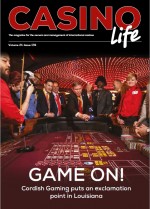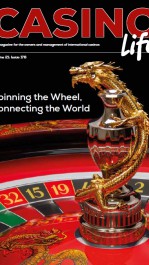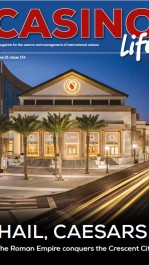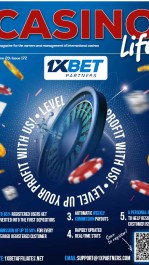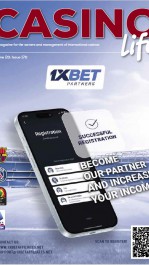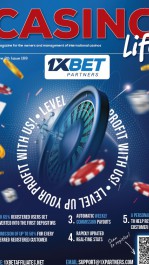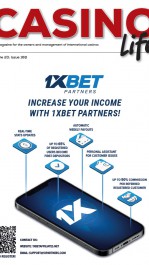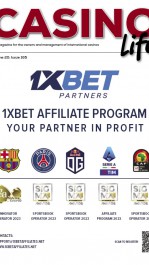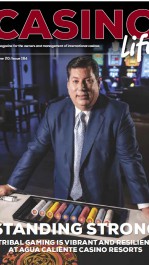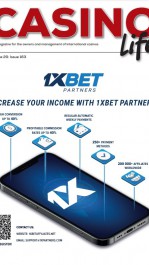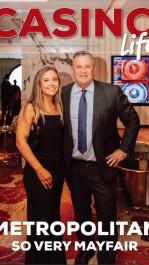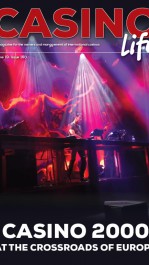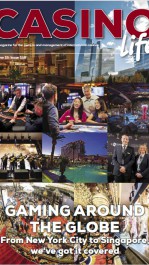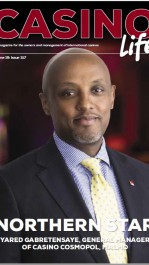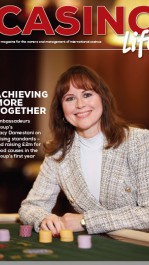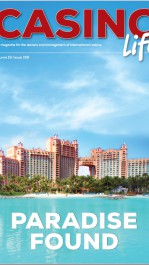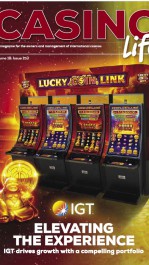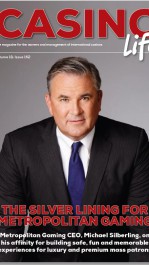David McKee chats to Blake Sartini CEO Golden Entertainment
Golden Entertainment is thinking big these days and if you didn’t know by its actions, the lobby of its corporate headquarters might provide a clue. It’s a three-story atrium, decorated with hunting trophies, and filled with sofas and coffee tables. Amid such grandeur, the lone receptionist seems dwarfed into insignificance. Outside, a few steps away, stands one of the company’s upmarket Sierra Gold taverns. Golden’s success is built in large part on its various tavern brands, 49 of which undergird the company’s prosperity with a mix of food, drink and video poker. Golden Entertainment also prospers from its distributed gaming or “slot route” division – locations in restaurants, stores and gas stations that host as many as 15 slot machines.
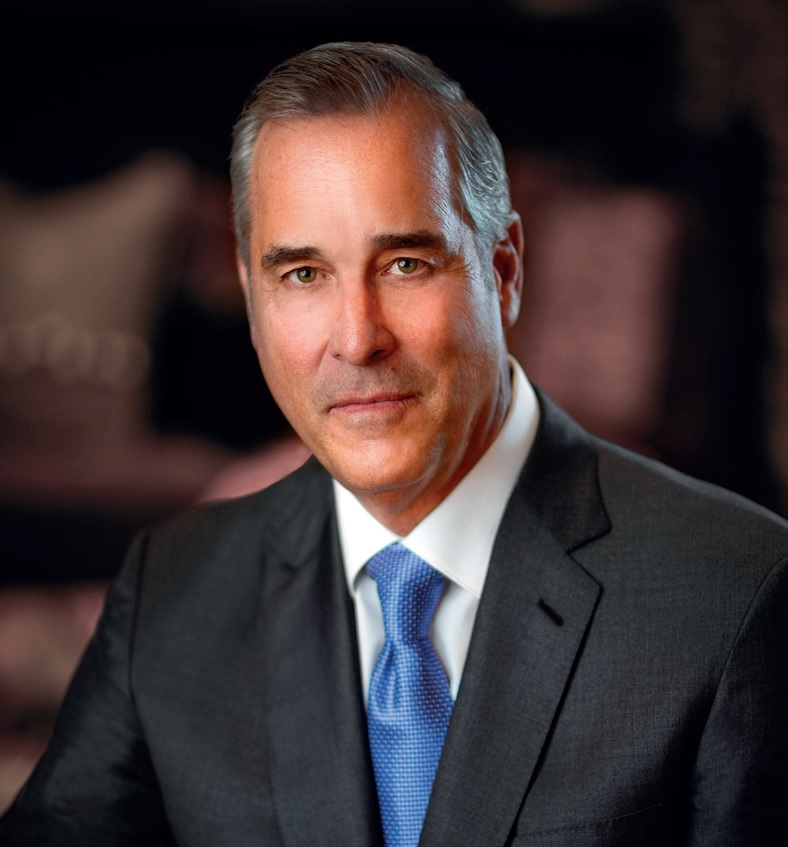 Golden is the creation and success story of CEO Blake Sartini, 57. In 2001, he gave up a sure thing as chief operating officer of Station Casinos to break out on his own as a slot-route operator, Golden Route Operations (formerly Southwest Gaming Services). Taverns came the next year, when he acquired the 23-outlet PT’s chain from businessmen Phil and Tom Boeckle and put his own stamp on the brand. He’s since added the Sierra Gold and Sean Patrick’s brands, and opened the company’s first microbrewery, PT’s Brewing Co. Brewmaster Dave Otto has been commissioned to craft six house brews, as well as to import his seasonal saison from Belgium. The restaurant will vary its standard menu with farm-to-table specials.
Golden is the creation and success story of CEO Blake Sartini, 57. In 2001, he gave up a sure thing as chief operating officer of Station Casinos to break out on his own as a slot-route operator, Golden Route Operations (formerly Southwest Gaming Services). Taverns came the next year, when he acquired the 23-outlet PT’s chain from businessmen Phil and Tom Boeckle and put his own stamp on the brand. He’s since added the Sierra Gold and Sean Patrick’s brands, and opened the company’s first microbrewery, PT’s Brewing Co. Brewmaster Dave Otto has been commissioned to craft six house brews, as well as to import his seasonal saison from Belgium. The restaurant will vary its standard menu with farm-to-table specials.
Farther afield, Sartini closed a $341 million merger with Lakes Entertainment last August. That brought it Rocky Gap Casino Resort, a 600-slot, 17-table-game casino in western Maryland whose amenities include a Jack Nicklaus-designed golf course. For an additional $20 million, Sartini picked up three distributed gaming operators in Montana, bringing another 1,200 one-armed bandits into the Golden fold. The transaction was financed with a mix of Golden stock (ticker symbol: GDEN), cash on hand and lines of credit.
For someone whose fortunes are on a roll, Blake Sartini is of a very modest demeanor, as befits a man who put himself through college by recycling mobile-home tires and axles, and who worked his way to the top of the casino business after starting as a dealer. He answers questions in a simple, direct manner and his boardroom is remarkably devoid of testimonials to his company’s success. Only two antique slot machines flanking the door offer any clue to the kind of business transacted within.
We began our conversation by harkening back to Sartini’s very humble beginnings in the casino business, a long way from the CEO’s office.
What was your break-in joint?
I broke in at the El Cortez Casino in downtown Las Vegas as a 25-cent craps dealer. That’s where I started in the industry, in 1982, I think.
What did you learn working for the Gaughans, Jackie and Michael?
I learned a significant lesson in the art of providingvalue to gaming customers who are taking chances on games of chance. But the constant that Michael and his organization provided was always great value, whether it was in their gaming offerings or non-gaming offerings, and they put their customers first.
You rose from table games foreman at Palace Station to COO of Station Casinos in eight years. How did you achieve that? That’s quite impressive.
The organization was growing rapidly and there was a significant need for management to step up, and that experience was very strong for me. It was two things: The growth provided significant opportunity and that opportunity was filled by very strong individuals, and I was fortunate to have a strong gaming background and filled a void in that gaming-specific area.
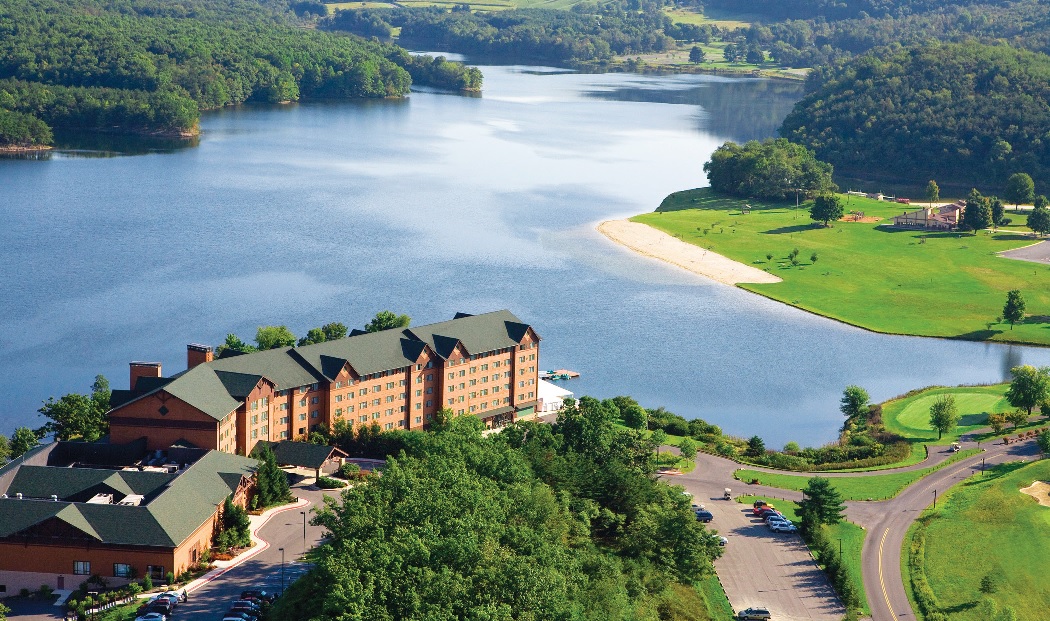
You’ve worked for two of the three great Las Vegas gaming families, the Gaughans and the Fertittas. What was the importance of Frank Fertitta Jr. to your career? I understand it was very great.
Frank Fertitta Jr. was an immense influence not only on my professional career but on me personally. He was a man of great character. He was a terrific individual to work for and with. He influenced me in significant ways, personally and professionally, that have guided my career. I can’t say enough about the man, and not only about his oversight, his involvement and his vision of his business but what he did in the community: How he shared his success within the community in giving back was second to none. He was a very humble guy.
What was the genesis of Southwest Gaming Services, which eventually became Golden Route Operations?
I had a high school friend who was working in the vending industry in Southern California, traditional vending – soft drinks, chips, candies and snacks. He came home to Las Vegas, worked in the same industry here and at one point said, “There’s an opportunity for us to get into this business.” I was a full-time, committed executive at Palace Station, and we decided to get into the business and purchase some equipment, rented a warehouse, and we started vending around town, leveraging relationships to put vending machines in local gaming facilities. That grew into our effort to build these taverns with machines. We called them Loose Caboose.
Southwest Services was being run as a subsidiary of Station Casinos, whereby we had gaming devices around town. I think at the time I purchased it [from Station], it was around 900 gaming devices and a few small taverns, and that business was competing for significant capital that we were using to build very large-scale, local casinos. So it was being run as a subsidiary but obviously was not a priority of the company, given that we were building world-class locals facilities in various parts of the valley. Around 2000, 2001, I thought there was an opportunity to take that business and today it’s Golden Entertainment.
So now we’re up to 2002 and you’ve struck out on your own and are following up the slot routes with Golden Tavern Group. How do you differentiate its various brands?
The brands are differentiated in a couple of different ways. Primarily, we operate four unrestricted locations with 35 devices. We put a PT’s under those to differentiate the fact that we call them small casinos. The PT’s Pubs consist of the original 19 or 20 taverns that I purchased and they are traditionally smaller, in line in strip malls or major retail centers, and then the PT’s Golds are those that I developed from the ground up, which were new designs, casually upscale and those tend to be freestanding, in higher-traffic areas, and the primary growth --- post the original pubs that we purchased – is in the Golds and the Sierra Golds, which is our upper-end, our flagship, our most casually upscale property. The idea was Golden Gaming was planned feeling that I had a golden opportunity in purchasing the original Southwest Services from Station.
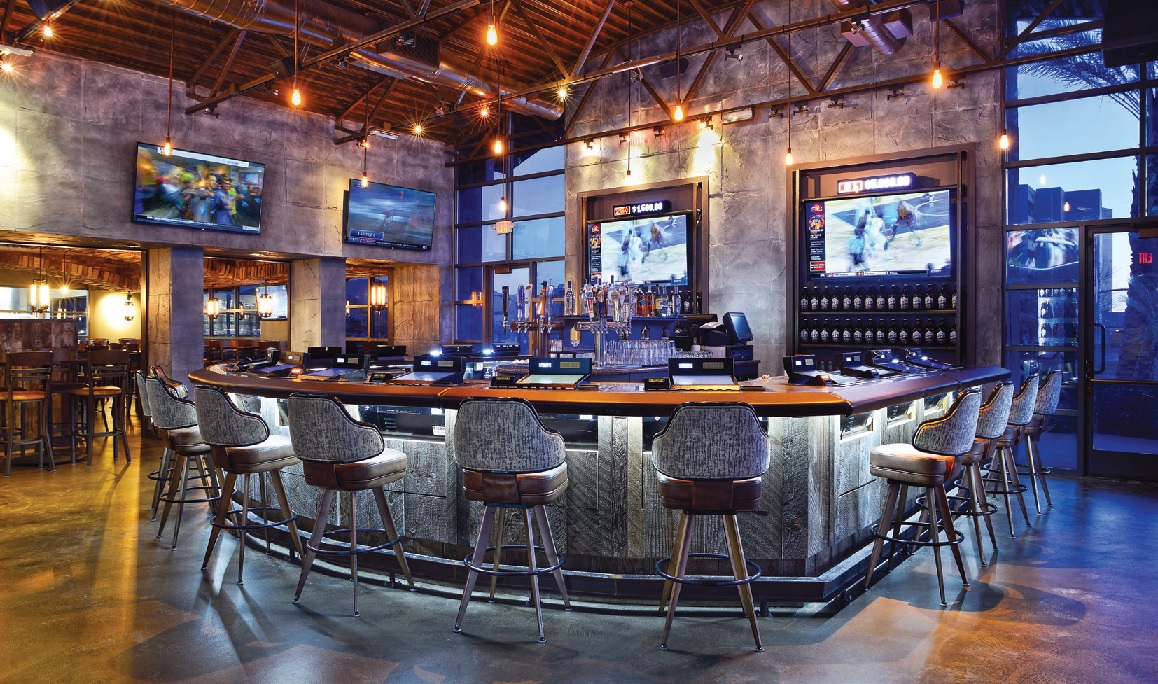
Nevada requires gaming revenue to be incidental to taverns. How big a portion of Golden’s revenue stream is it?
The Nevada regulatory section covering restricted gaming does not require [gaming revenue to be incidental], it’s one component of about eight, starting with a restricted operation must have a primary business. So that primary business is the catalyst to that waterfall of the six or seven other items that they take into account to determine whether it’s appropriate for 15 devices. Gaming revenue is one of those. Our franchise in our taverns, taking into account cash and comps on the retail side, overall, is roughly about 50/50. There are taverns that skew higher on the gaming side but the incidental [revenue] can happen as a consequence … in other words, if you have a primary business as a result of a great product, someone may come in to one of those devices and play a significant amount of money, and therefore skew for that day or month gaming revenue to retail revenue. But the primary business is what drove that person – a sporting event, a pool table, a bar host they have a relationship with – to that location.
If I were to walk into the most rudimentary PT’s, what would I see that differentiates it from a Dotty’s or a Jackpot Joanie’s slot parlor?
The original PT’s, immediately you will see in most of our locations a large island bar. That is a standard, 42-inch-high bar with multiple seats and spots that have gaming devices in front of them and spots that don’t. In addition, you will see activity from pool tables, to shuffleboard to dart games. You will see 45- to 70-inch TVs and the primary difference is the bar is obvious in the way it sits within the space and, as a result that bar is the prime differentiator. In each of our locations, other than those that were grandfathered, we provide food and beverage out of a kitchen, prepared fresh. So there are pretty significant differences.
How have you adjusted to the Nevada Clean Indoor Air Act?
When it was first passed, there was no flexibility. There was no smoking in those tavern locations, period. Going forward, when we built new taverns, we would provide a non-smoking area to eat, and in the bars themselves, as long as [you] were 21 or older, you could smoke. As that law morphed and was revisited, smoking’s now allowed in our locations and, the way we operate, we are 21-and-older, period. So the law is clear that the exposure of minors to secondhand smoke is prohibited. We solved that by maintaining that you’re 21 or older when you walk in the door. So there’s no families, no children, no adolescents in our locations. We are an adult-orientated tavern facility.
When you bought PT’s in ‘02, how did you address the previous ownership’s reputation for poor paytables?
We immediately did a couple of things. They were operating with devices that were not mainstream at that time, so we did immediately replace some of their devices with primarily newer, IGT devices. And those devices had paytables that were common to players, that they would see in other parts of town. Secondly, we overlaid an awards program to our guests, a proprietary program, written specifically for our gaming business. It rewards people who participate in the gaming side of our offerings with rewards from additional play to retail.
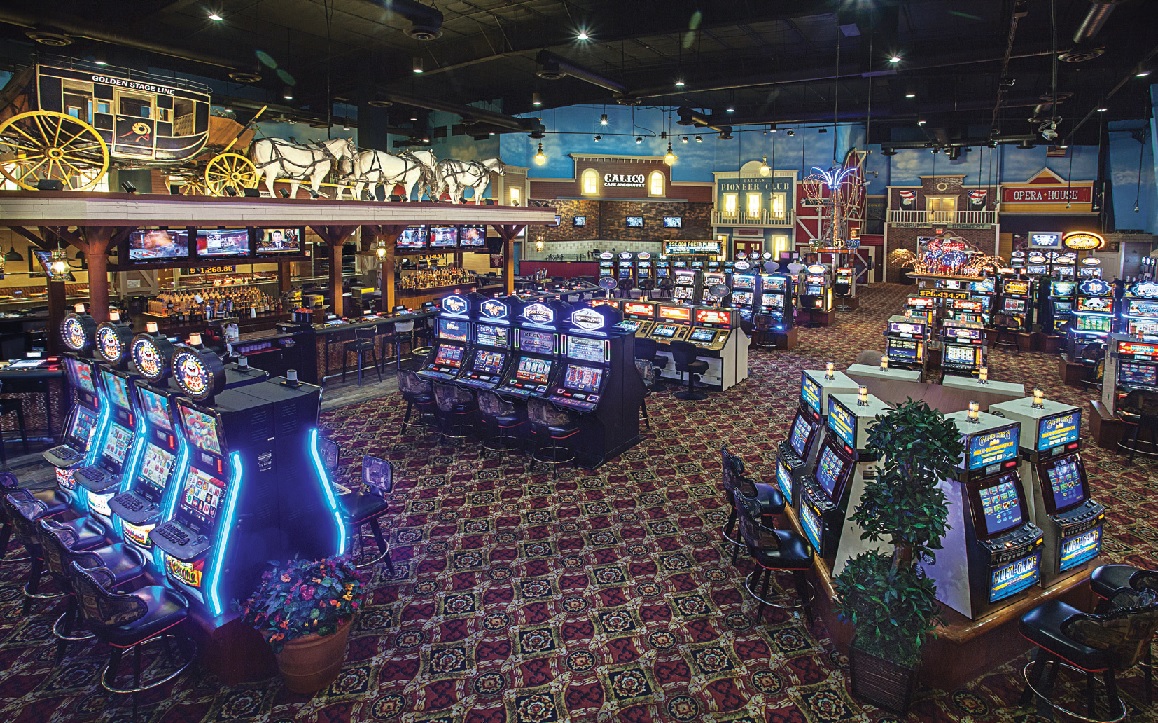
You’re revamping your loyalty program again. Could you explain a bit more about what’s being done and why?
In our casino group in Nye County, we are implementing a Konami integrated-gaming admin system, which will tie all three of our properties together. So we are introducing a one-card opportunity, which will allow us to leverage what we believe are the premium food-and-beverage outlets and entertainment. Guests earn value on that single card wherever they play. Right now, our rewards programs are separate and they don’t aggregate. So this investment in casinos will allow for a linked approach to player-rewards programs in Nye County, allowing a patron to use one card no matter where they go.
Gold Town is going to a smoke-free bingo room. We’ve seen a few of those in Southern Nevada now. Are we evolving towards a smoke-free casino floor or is that simply too unlikely?
My view is, particularly in the state of Nevada, it remains to be unlikely. Nevada clearly understands the relationship between allowing people to participate in smoking, if that’s what they choose. There’s a high correlation and Nevada understands that. If you look at other markets where [smoking bans] have gone, I don’t have the specific information but immediately post these types of initiatives the revenues have significantly decreased. People know what they’re doing when they walk through the door of a casino, much like when they walk through my taverns: We allow smoking and in our places we try to contain it around the bar but they can actually smoke anywhere. People understand what happens within those casinos and it’s unlikely that we’ll see non-smoking.
How many taverns, slot routes and aggregate slot machines does Golden have at this point?
Don’t hold me to this exact number because we just added about 1,200 in Montana, but I can show you a page that puts us above a lot of the companies you’re probably familiar with. I think our aggregate device count is around 10,000 or 11,000. If you back the three casino floors out, it’s 8,000 or 9,000 devices. So we are, as far as I know, the largest operator of gaming devices that exist outside of casinos at this point in the country. By the first half of this year, give or take around June, we will have 54 or 55 taverns under our wholly owned brands. We are adding six. We just opened a new brewery concept and we will roll out five more over the first half of this year.
What was the attraction of Rocky Gap Casino and what are your plans for it?
As a part of the merger that we consummated in August, I felt that the Rocky Gap facility fit very nicely within the current casino portfolio. It is within three hours’ drive of 10 million people. It is extremely unique, given its location within a national park and on a lake. We are very bullish on the future of that property. We are working on a master plan there now that, over the course of time, will include an additional 200 hotel rooms, additional food and beverage facilities, additional slot machines and some entertainment venues. We are very excited about the future of that property, given its location. We haven’t put a magnitude to that [new investment] yet. We are in the process of remodelling hotels. That number is anywhere from $2 million to $4 million for 200 rooms. We’ve just added 150 parking spaces, which was $1.2 million.
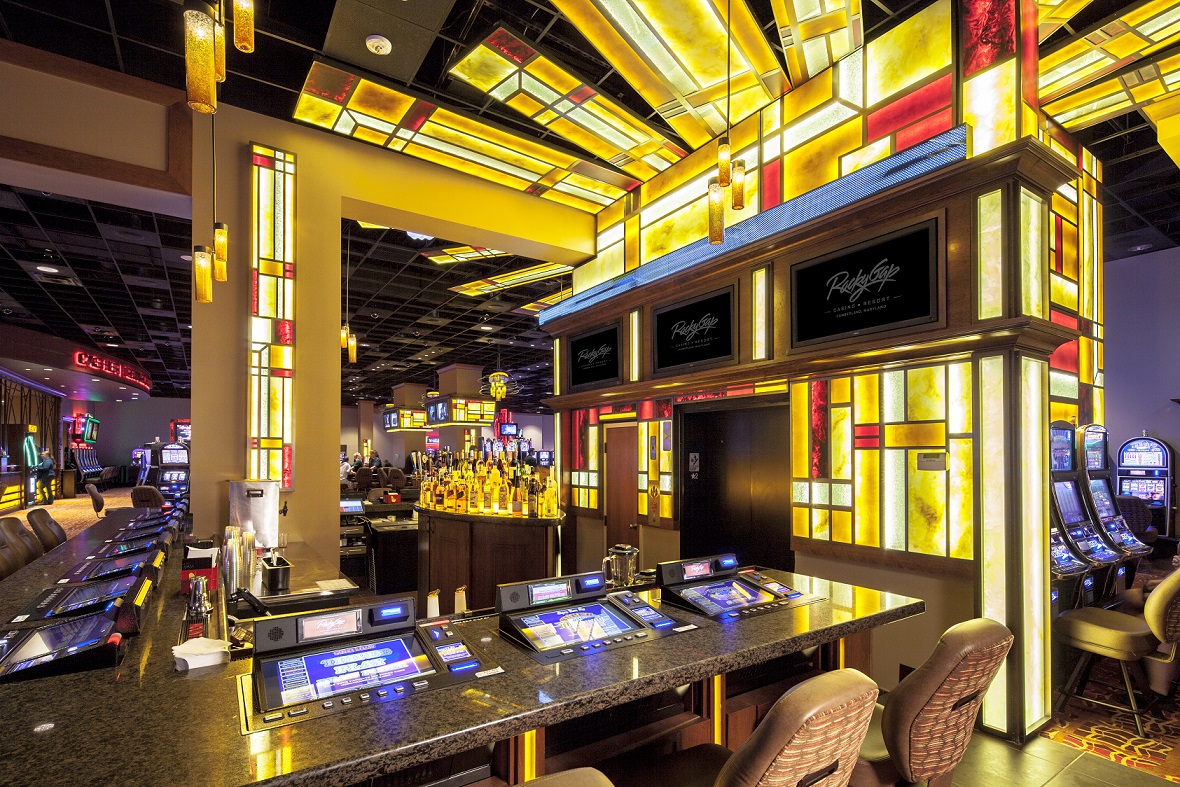
But this isn’t your first casino in a drive-in market. You used to have some in Colorado, didn’t you?
We had three casinos in Black Hawk, Colorado. It was a commute from Denver and the surrounding areas, and we did very well with those properties, divesting them in March of 2012, when we acquired the Nevada assets through the Affinity Gaming transaction.
How concerned are you about MGM National Harbor cutting into Rocky Gap’s business?
Any time a facility of that size opens, you’re aware. However, if you look at the Horseshoe property that opened in downtown Baltimore while Rocky Gap was operating, we saw zero [impact] in that. We’re anticipating, given the insular location of Rocky Gap, which is about an hour and a half or so from Baltimore and about two or two-and-a-half hours from Pittsburgh, we’re not anticipating an impact to our operations Montana was a natural for us for a couple of reasons. We have an affiliation up there in that one of my sons graduated from the University of Montana, which is located in Missoula, and over the course of the years that he was in school we spent some time up there and became aware of the burgeoning gaming business that was growing up there. As we looked for opportunities, particularly post the [Lakes] merger, to grow and create value. Montana has, give or take, 16,500 restricted gaming devices, in comparison to Nevada, which has about 18,500. So it’s a significant footprint of gaming devices up there and the state is clearly very spread out and in large part rural. We felt it was a natural to leverage our current operations, particularly out of northern Nevada where we operate a significant route, to springboard into that market. It was the combination of a couple of things: our analysis of the market over the last couple of years and opportunity. So we’re very excited about establishing our footprint up there.
In 2013, you were licensed for interactive gaming. What are your plans in that sector?
We have no immediate plans. At that time, the online-poker effort was underway, both locally and nationally. And we spent a lot of time investigating various ways that our company could participate and were actively pursuing ideas on how to get involved. Over the last couple of years, online poker – which is where we were focused – has not gained the momentum we or anyone else thought. So at this point, whether it’s real-money online gaming to social gaming, which is becoming a pretty big phenomenon, we’re simply evaluating those particular opportunities.
What’s your theory for the underperformance of online poker?
I don’t really have a specific answer to that. There was a large population of play prior to Black Friday, when the offshore businesses were essentially shut down, and I’m not sure it ever got restarted. I’m not going to call it dead at the moment but it just doesn’t seem to have gotten a resurgence and I don’t know why.
Generically speaking, what’s the next logical step in growing the company?
We are very uniquely positioned, primarily as a public company with access to capital, to grow in taverns, distributed or route gaming, or traditional casino gaming, which is where my DNA originated. So we have tangible opportunities to grow, as illustrated by the Montana acquisition, in routes, and tangible opportunities as represented by the six taverns we’re opening this year. You will see us continue to take advantage of opportunities in those two areas. I also think, over time, that we will be in additional, traditional casino operations and I see some opportunity from these regional facilities to be involved, and we are actively looking at those, but I would say they’re not as tangible as the ones that we’re acting on in the routes and taverns today. But you will see us involved in casinos as well in the future.

